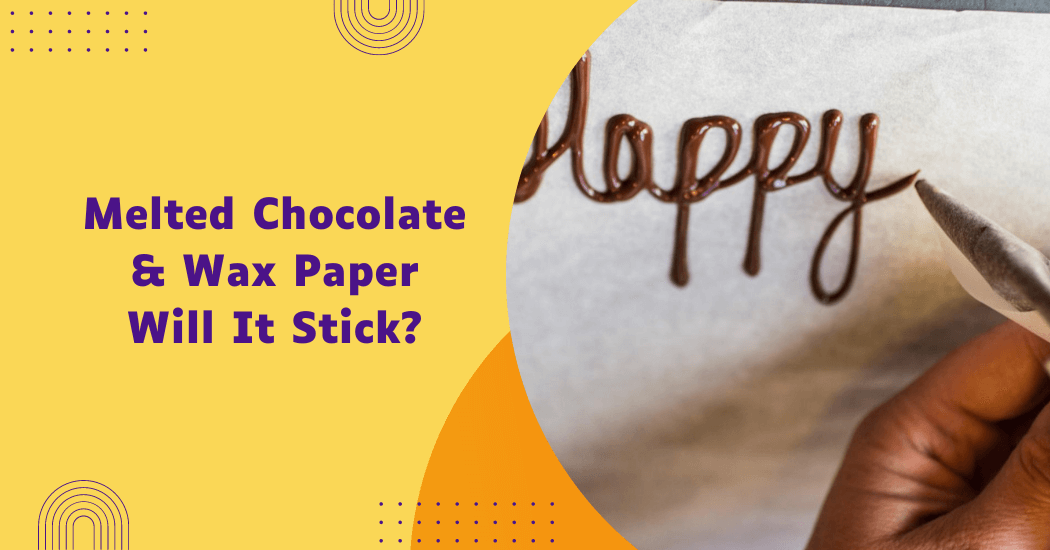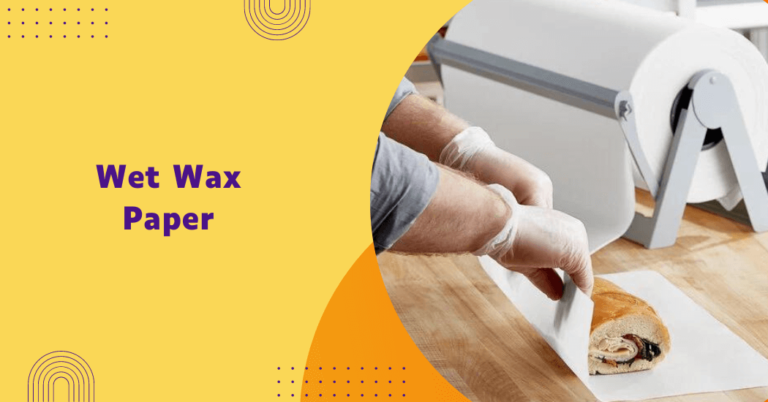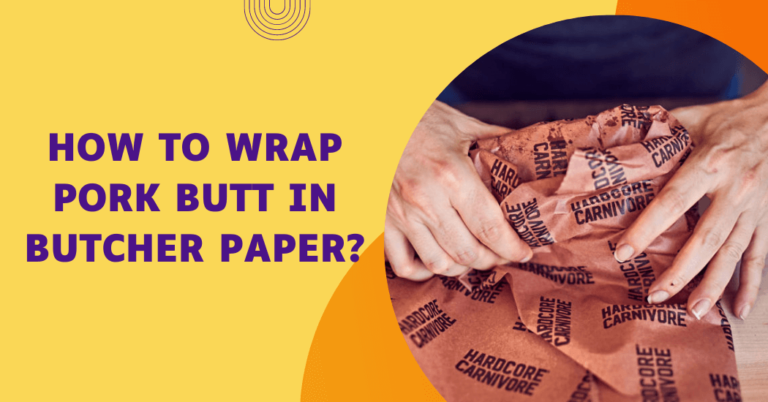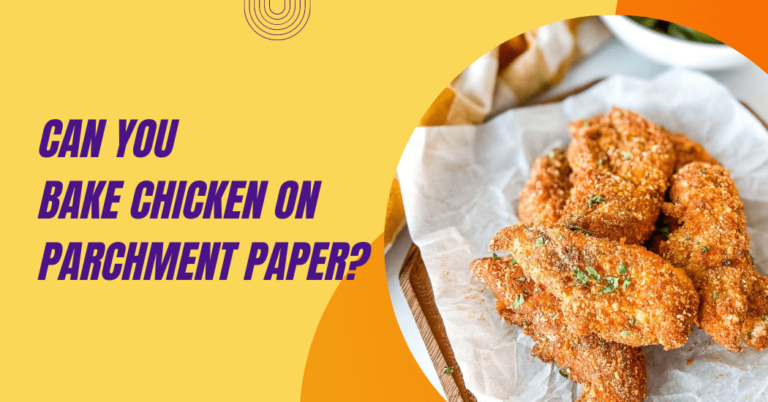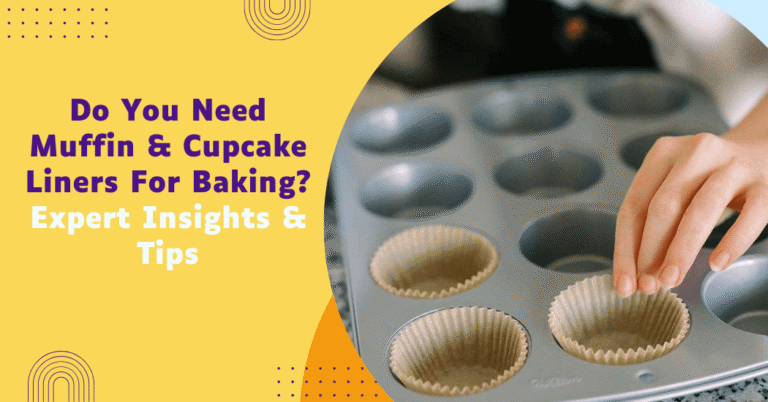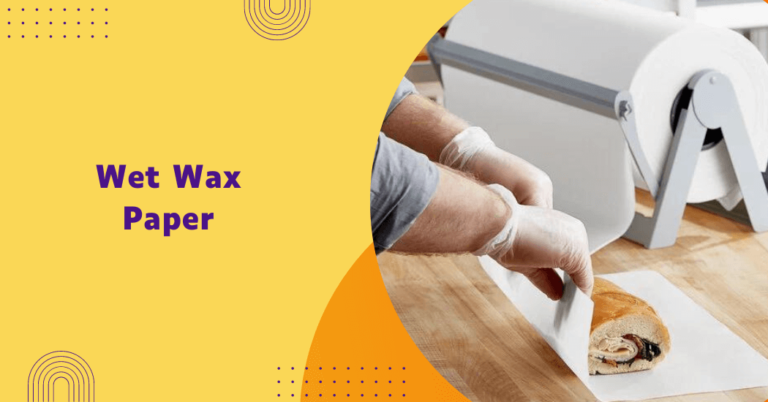Will melted chocolate stick to wax paper?
Have you ever found yourself during a baking project, wondering whether melted chocolate will stick to wax paper? It’s a common question that arises when working with chocolate and the answer may surprise you.
Understanding the science behind how chocolate interacts with different surfaces can make all the difference in your culinary endeavors.
Let’s delve into the world of chocolate and wax paper to uncover the truth behind this sweet and sticky conundrum.
Will Melted Chocolate Stick to Wax Paper
No, typically melted chocolate will not stick to wax paper. Wax paper is coated with a thin layer of paraffin wax, making it nonstick and moisture-resistant. When chocolate is in its melted state, the wax prevents it from adhering firmly to the paper.
As the chocolate cools and solidifies, it contracts slightly, which makes it easier to peel off from the wax paper without leaving much residue behind.
However, it is important to carefully peel the chocolate off once it has completely cooled to avoid any potential breakage. This will ensure that the paper is of good quality and has a proper wax coating, preventing any potential sticking.
Practical tips for working with chocolate and wax paper
When working with chocolate and wax paper, consider these practical tips to ensure a smooth process and an impeccable result:
- Use a double boiler or microwave to melt chocolate: When melting chocolate, it’s best to use a double boiler or microwave to ensure that it melts evenly and does not burn. Uneven heat can cause the chocolate to seize up and become clumpy, making it difficult to work with.
- Keep wax paper away from heat sources: Wax paper is susceptible to melting or catching fire when exposed to high heat sources. Keep it away from the oven, stovetop or any other hot surfaces.
- Cut wax paper into small pieces for easy handling: When working with melted chocolate, cutting the wax paper into smaller squares can make it easier to handle and maneuver around as you pour the chocolate onto it.
- Use a spatula to spread melted chocolate evenly: To ensure an even layer of chocolate, use a spatula to spread it out gently and smoothly over the wax paper.
- Chill the chocolate for easier handling: If you find that the chocolate is sticking to your hands when trying to peel it off the wax paper, try chilling it in the refrigerator for a few minutes before handling it.
- Experiment with different types of chocolate: Different types of chocolate may have varying levels of stickiness when melted. Dark chocolate tends to be less sticky than milk or white chocolate, so it may be easier to work with on wax paper.
Factors influencing the adhesion of melted chocolate
The adhesion of melted chocolate to surfaces can be influenced by several factors that can alter the outcome of your culinary projects. Among these factors are:
- Type of coating on the paper: The effectiveness of nonstick paper like wax paper depends on the quality and amount of coating applied. Parchment paper, for instance, with its silicone coating, could offer a different result.
- Temperature and cooling rate: Chocolate’s behavior changes with temperature fluctuations. Rapid cooling can cause it to retract more, reducing adhesion, while slow cooling might result in a firmer attachment to the paper.
- Humidity: Moisture in the air can affect chocolate’s texture and contribute to its stickiness. High humidity might cause chocolate to adhere more to the wax paper.
- Composition of the chocolate: Different chocolate varieties, due to their distinct sugar, fat and cocoa contents, can react uniquely when melted.
- Surface texture of the paper: Smoother surfaces tend to reduce adhesion; therefore, the smoother the wax paper, the less likely the chocolate will stick.
- Thickness of the chocolate layer: Thicker layers of chocolate may take longer to cool and contract, which could lead to increased sticking chances.
By understanding these factors, chocolatiers and hobbyists alike can better manipulate the conditions to ensure their chocolate creations come off the paper cleanly and intact.
Alternative materials to wax paper
| Material | Description | Recommended use |
| Parchment paper | Coated with silicone, making it nonstick and moisture-resistant. More durable than wax paper. | Baking, cooking and wrapping chocolates or other oily foods. |
| Plastic wrap | Thin polyethylene film that provides a slick surface for melted chocolate. Can be easily molded around shapes. | Drizzling chocolate, lining cake pans and covering desserts for chilling. |
| Aluminum foil | Thin metal sheets that offer a smooth surface with no coating. Can be shaped to fit baking trays or molds. | Molding chocolate into different shapes or transferring it onto chilled surfaces. |
| Silicone mats | Nonstick mats made of food-grade silicone that can withstand high temperatures. Reusable and easy to clean. | Baking, candy making and chocolate molding. |
| Freezer paper | Coated with plastic on one side and designed for freezing foods. Has a slick surface that makes it useful for melting chocolate. | Wrapping chocolates or lining surfaces when working with sticky ingredients. |
| Wax-coated foil | Aluminum foil coated with a food-grade wax that makes it nonstick and heat-resistant. Durable and easy to mold. | Wrapping chocolate candies, bars or truffles for storage or transport. |
Expert advice and common misconceptions
| Expert advice | Misconception | Clarification |
| Use the right chocolate for the task | All chocolates perform the same in every recipe. | Different chocolate types have distinct melting points and textures, making some better for molding versus coating. |
| Temper chocolate for a glossy finish and snap | Tempering is an unnecessary step. | Proper tempering prevents the dull grayish color and waxy texture that occur when the cocoa fats separate. |
| Use tools designed for chocolate | Any kitchen utensil is fine for handling chocolate. | Specialized chocolate tools can make shaping and decorating more precise and less messy. |
| Understand the role of cocoa butter | More cocoa butter means a better product. | The right balance of cocoa butter ensures proper setting and melting characteristics for the desired use. |
| Store chocolate in a cool, dry place | Refrigeration is the best way to store chocolate. | Moisture and odors can permeate chocolate; it should be stored at room temperature, away from strong smells. |
| Check the temperature with a test piece | If it’s melted, it’s ready to use. | Testing the temper on a small piece can prevent ruining a larger batch if it hasn’t reached the right consistency. |
| Work with chocolate at room temperature | The colder, the better. | Chocolate that is too cold can seize and become unusable but warm environments can cause it to melt prematurely. Working at a cool room temperature (60-65°F) provides the best results |
Frequently Ask Questions
Does melted chocolate always stick to wax paper?
Melted chocolate doesn’t always stick to wax paper. The level of stickiness can vary depending on several factors, such as the type of chocolate, the temperature and the quality of the wax paper.
Can I use parchment paper instead of wax paper for chocolate work?
Parchment paper is an excellent alternative to wax paper for chocolate work due to its silicone coating and nonstick properties.
Is there a type of chocolate that works best with wax paper?
Dark chocolate is generally known to work better with wax paper as it tends to be less sticky than milk or white chocolate.
How can I ensure my chocolate creations come off the wax paper cleanly?
To ensure clean removal, pay attention to factors such as the chocolate’s thickness, allow sufficient cooling time and consider using chocolates that are formulated for easy release from surfaces.
Are there any tools or utensils that can help when working with chocolate and wax paper?
Specialized chocolate tools, such as offset spatulas, chocolate forks or dipping tools, can help in handling chocolate more effectively, preventing it from sticking to wax paper.
Conclusion
Achieving the perfect level of adhesion for melted chocolate depends on various factors such as temperature, humidity, coating type and surface texture.
By controlling these elements, experimenting with alternative materials and following expert advice, you can create beautifully crafted chocolate treats without the frustration of sticky residue on wax paper.
With practice and knowledge, you can become a skilled chocolatier capable of producing mouth-watering creations that are sure to impress.
Remember to always use high-quality chocolate and have fun honing your skills in the kitchen.
